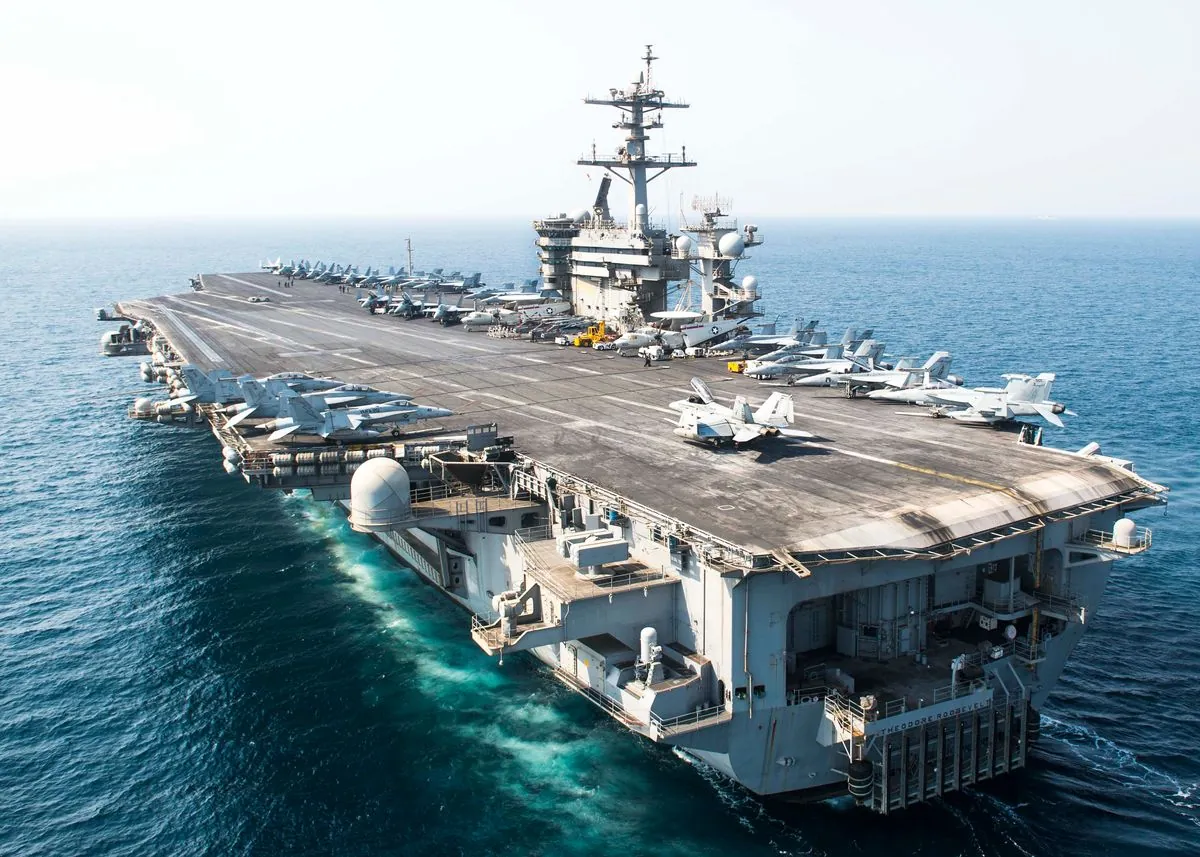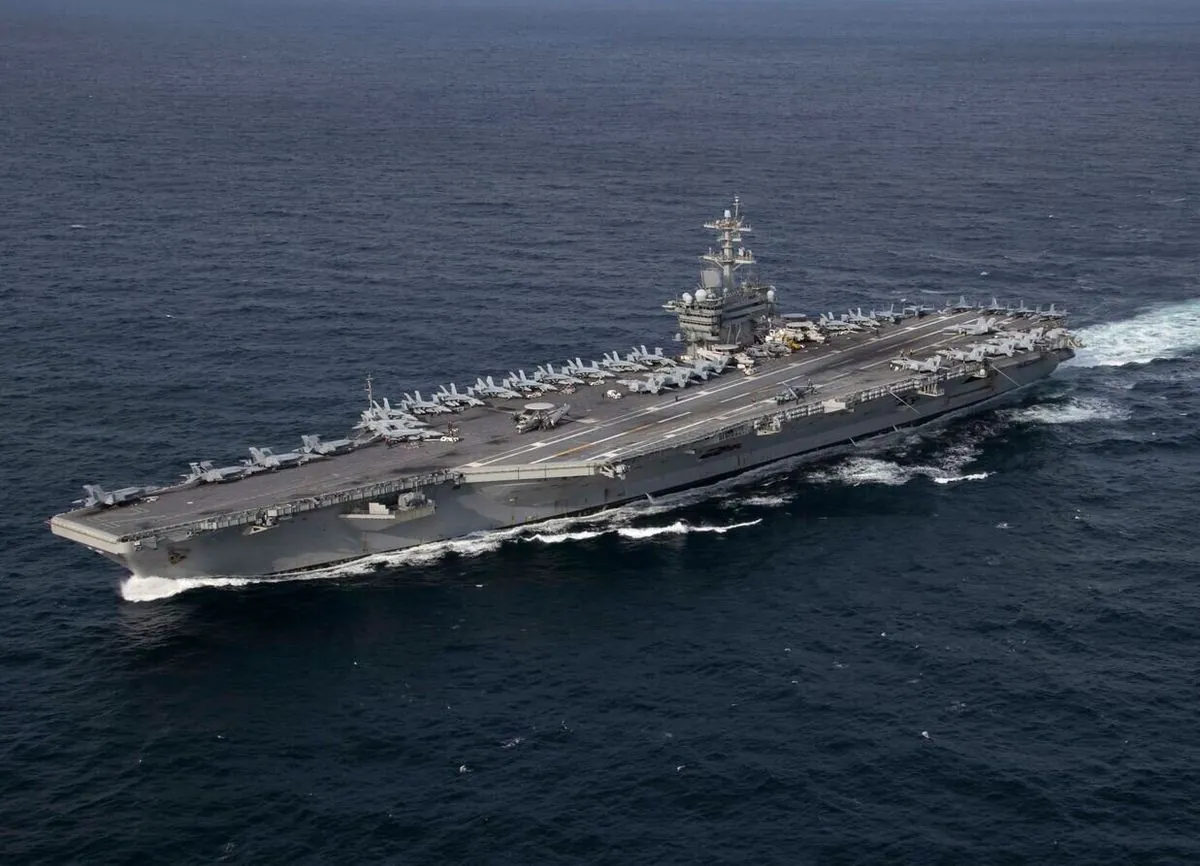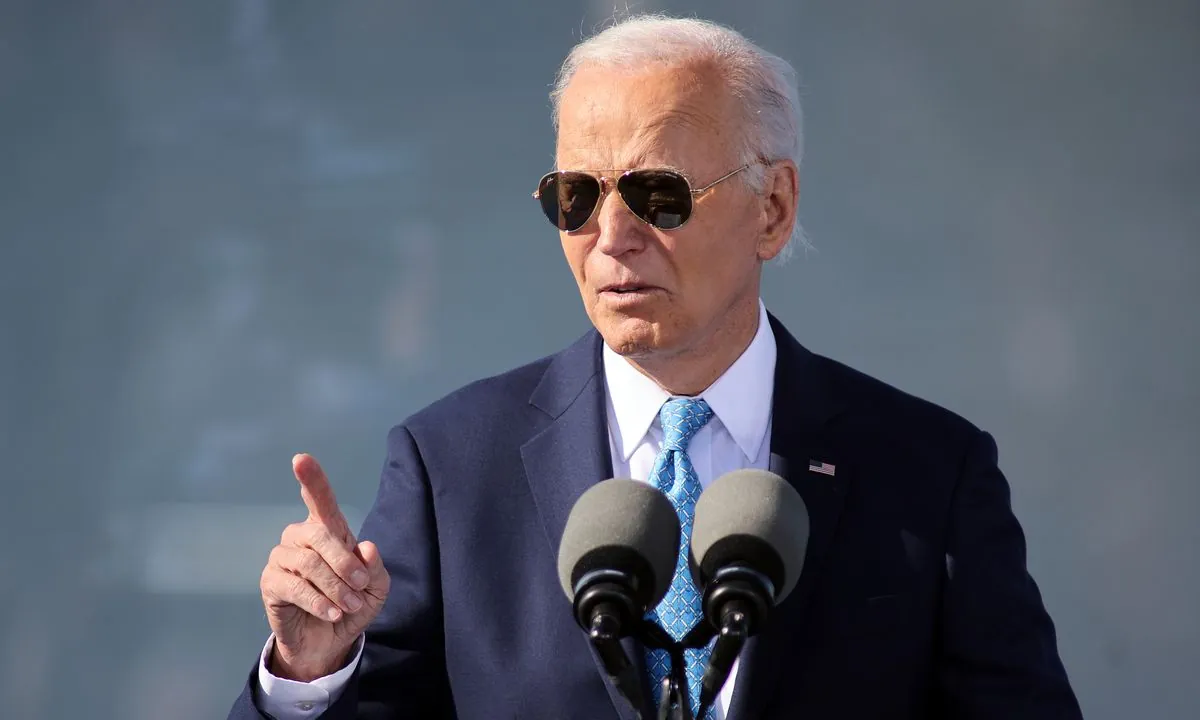U.S. Navy Ends Dual Carrier Presence in Middle East as USS Theodore Roosevelt Departs
The Pentagon concludes its rare dual aircraft carrier deployment in the Middle East as USS Theodore Roosevelt heads home. This shift comes amidst ongoing regional tensions and naval rotations.

The U.S. Department of Defense has concluded its uncommon dual aircraft carrier presence in the Middle East, with the USS Theodore Roosevelt now en route to its home port. This decision marks a shift in the Pentagon's recent naval strategy in the region.
Lloyd Austin, the U.S. Secretary of Defense, had previously extended the Roosevelt's deployment to overlap with the arrival of the USS Abraham Lincoln. This move was part of a broader effort to bolster the U.S. military presence in the area, aimed at protecting Israel from potential Iranian threats and safeguarding American troops.
The presence of U.S. aircraft carriers in the Middle East has long been viewed as a potent deterrent, particularly against Iran. Since the outbreak of the Israel-Hamas conflict in October 2023, the U.S. has maintained a consistent carrier presence in and around the region, with brief periods of dual carrier deployments.

The ongoing Israel-Hamas war, now in its 11th month, has resulted in significant casualties and repeated failures in ceasefire negotiations. Both parties continue to accuse each other of making unacceptable demands, prolonging the conflict.
Earlier this year, the USS Dwight D. Eisenhower was stationed in the Red Sea for several months, tasked with supporting Israel and defending ships from attacks by Yemen's Houthi rebels. The Navy described this deployment as the most intense combat operation since World War II, lasting over eight months.
As the Roosevelt departs, the Lincoln remains in the Gulf of Oman with its accompanying warships. The U.S. maintains a significant naval presence in the eastern Mediterranean Sea, while two destroyers and the guided-missile submarine USS Georgia operate in the Red Sea.
"The San Diego-based Roosevelt and the USS Daniel Inouye, a destroyer, are expected to be in the Indo-Pacific Command's region on Thursday."
This redeployment reflects the dynamic nature of U.S. naval operations and the ongoing need to balance global commitments. The USS Russell, another destroyer from the Roosevelt's strike group, has already moved to the South China Sea, highlighting the Navy's focus on multiple strategic regions.
The U.S. Navy's ability to maintain a robust presence in various global hotspots underscores its significant capabilities. With 11 active aircraft carriers as of 2024, the Navy can project power across multiple theaters simultaneously, adapting to evolving geopolitical situations and security challenges.


































